Description
Chapter 1 Information Systems in Business Today
1) Internet advertising is growing at approximately 10 percent a year.
Answer: TRUE
Diff: 3 Page Ref: 5
AACSB: Reflective thinking skills
CASE: Knowledge
Objective: 1.1
2) Developing a new product, fulfilling an order, and hiring a new employee are examples of business processes.
Answer: TRUE
Diff: 1 Page Ref: 9
AACSB: Reflective thinking skills
CASE: Knowledge
Objective: 1.1
3) A fully digital firm produces only digital goods or services.
Answer: FALSE
Diff: 2 Page Ref: 9
AACSB: Reflective thinking skills
CASE: Knowledge
Objective: 1.1
4) A business model describes how a company produces, delivers, and sells a product or service to create wealth.
Answer: TRUE
Diff: 1 Page Ref: 11
AACSB: Reflective thinking skills
CASE: Knowledge
Objective: 1.1
5) Information technology (IT) consists of all the hardware that a firm needs to use in order to achieve its business objectives, whereas information systems consist of all the software and business processes needed.
Answer: FALSE
Diff: 2 Page Ref: 12
AACSB: Use of information technology
CASE: Knowledge
Objective: 1.2
6) Computers are only part of an information system.
Answer: TRUE
Diff: 1 Page Ref: 13
AACSB: Use of information technology
CASE: Knowledge
Objective: 1.2
7) Information systems literacy describes the behavioral approach to information systems, whereas computer literacy describes the technical approach.
Answer: FALSE
Diff: 1 Page Ref: 14
AACSB: Use of information technology
CASE: Knowledge
Objective: 1.2
8) The dimensions of information systems are management, organizations, and information technology.
Answer: TRUE
Diff: 2 Page Ref: 15
AACSB: Reflective thinking skills
CASE: Knowledge
Objective: 1.2
9) Knowledge workers assist with paperwork at all levels of the firm.
Answer: FALSE
Diff: 1 Page Ref: 15
AACSB: Reflective thinking skills
CASE: Knowledge
Objective: 1.2
10) There are four major business functions: sales and marketing; manufacturing and production; finance and accounting; and information technology.
Answer: FALSE
Diff: 1 Page Ref: 15
AACSB: Reflective thinking skills
CASE: Knowledge
Objective: 1.2
11) In order to understand how a specific business firm uses information systems, you need to know something about the hierarchy and culture of the company.
Answer: TRUE
Diff: 2 Page Ref: 16
AACSB: Analytic skills
CASE: Analysis
Objective: 1.2
12) Business processes are illogically related tasks for accomplishing tasks that have been formally encoded by an organization.
Answer: FALSE
Diff: 2 Page Ref: 9
AACSB: Reflective thinking skills
CASE: Knowledge
Objective: 1.1
13) A substantial part of management responsibility is creative work driven by new knowledge and information.
Answer: TRUE
Diff: 1 Page Ref: 16
AACSB: Reflective thinking skills
CASE: Knowledge
Objective: 1.2
14) Intranets allow firms to work easily with third-party suppliers and vendors.
Answer: FALSE
Diff: 2 Page Ref: 11
AACSB: Use of information technology
CASE: Knowledge
Objective: 1.2
15) UPS’s use of Web-based tools that allow customers to embed UPS functions such as tracking and cost calculations into their own Web sites was an information systems solution used to achieve customer intimacy.
Answer: TRUE
Diff: 3 Page Ref: 17
AACSB: Analytic skills
CASE: Analysis
Objective: 1.2
16) Studies have consistently shown that firms that invest greater amounts in information technology receive greater benefits than firms that invest less.
Answer: FALSE
Diff: 2 Page Ref: 21
AACSB: Use of information technology
CASE: Knowledge
Objective: 1.2
17) Government and private sector standards are examples of complementary social assets required to optimize returns from IT investments.
Answer: TRUE
Diff: 2 Page Ref: 21
AACSB: Reflective thinking skills
CASE: Knowledge
Objective: 1.2
18) A firm that invests in efficient business processes is making an investment in organizational complementary assets.
Answer: TRUE
Diff: 2 Page Ref: 22
AACSB: Reflective thinking skills
CASE: Knowledge
Objective: 1.2
19) The behavioral approach to information systems leaves aside technical solutions to instead analyze the psychological, social, and economic impacts of systems.
Answer: TRUE
Diff: 2 Page Ref: 23
AACSB: Reflective thinking skills
CASE: Knowledge
Objective: 1.3
20) The Apple iPhone, Android, Blackberry, and other mobile devices are able to download hundreds of thousands of applications to support collaboration, location-based services, and communication with colleagues.
Answer: TRUE
Diff: 2 Page Ref: 6
AACSB: Reflective thinking skills
CASE: Knowledge
Objective: 1.1
21) Managers adopt telepresence videoconferencing and Web conferencing technologies to reduce travel time and cost while improving collaboration and decision making.
Answer: TRUE
Diff: 2 Page Ref: 6
AACSB: Reflective thinking skills
CASE: Knowledge
Objective: 1.1
22) Using handhelds to run the business is limited to small companies.
Answer: FALSE
Diff: 2 Page Ref: 8
AACSB: Reflective thinking skills
CASE: Knowledge
Objective: 1.1
23) The emergence of the Internet as a full-blown international communications system has drastically increased the costs of operating and transacting on a global scale.
Answer: TRUE
Diff: 2 Page Ref: 9
AACSB: Reflective thinking skills
CASE: Knowledge
Objective: 1.1
24) An data set is a set of interrelated components that collect (or retrieve), process, store, and distribute information to support decision making and control in an organization.
Answer: FALSE
Diff: 2 Page Ref: 13
AACSB: Reflective thinking skills
CASE: Knowledge
Objective: 1.2
25) The six important business objectives of information technology are new products, services, and business models; customer and supplier intimacy; survival; competitive advantage; operational excellence; and ______________________________
A) improved flexibility.
B) improved decision making.
C) improved business practices.
D) improved efficiency.
Answer: B
Diff: 1 Page Ref: 10
AACSB: Use of information technology
CASE: Knowledge
Objective: 1.1
26) Which of the following choices may lead to competitive advantage:
1. new products, services, and business models; 2. charging less for superior products; 3. responding to customers in real time?
A) 1 only
B) 1 and 2
C) 2 and 3
D) 1, 2, and 3
Answer: D
Diff: 3 Page Ref: 12
AACSB: Analytic skills
CASE: Analysis
Objective: 1.1
27) The use of information systems because of necessity describes the business objective of
A) survival.
B) improved business practices.
C) competitive advantage.
D) improved flexibility.
Answer: A
Diff: 2 Page Ref: 12
AACSB: Use of information technology
CASE: Knowledge
Objective: 1.1
28) The move of retail banking to use ATMs after Citibank unveiled its first ATMs illustrates the use of information systems to achieve which business objective?
A) improved efficiency
B) customer and supplier intimacy
C) survival
D) competitive advantage
Answer: C
Diff: 2 Page Ref: 12
AACSB: Use of information technology
CASE: Analysis
Objective: 1.1
29) The four activities in an information system that produce the information organizations use to control operations are
A) information retrieval, research, output, and analysis.
B) input, output, retrieval, and feedback.
C) input, processing, output, and feedback.
D) data analysis, retrieval, processing, and feedback.
Answer: C
Diff: 1 Page Ref: 13
AACSB: Use of information technology
CASE: Knowledge
Objective: 1.2
30) Order data for baseball tickets and bar code data are examples of
A) raw input.
B) raw output.
C) customer and product data.
D) sales information.
Answer: A
Diff: 1 Page Ref: 13
AACSB: Use of information technology
CASE: Knowledge
Objective: 1.2
31) The average number of tickets sold daily online is an example of
A) input.
B) raw data.
C) meaningful information.
D) feedback.
Answer: C
Diff: 1 Page Ref: 13
AACSB: Use of information technology
CASE: Analysis
Objective: 1.2
32) Output
A) is feedback that has been processed to create meaningful information.
B) is information that is returned to appropriate members of the organization to help them evaluate the input stage.
C) transfers data to the people who will use it or to the activities for which it will be used.
D) transfers processed information to the people who will use it or to the activities for which it will be used.
Answer: D
Diff: 1 Page Ref: 13
AACSB: Use of information technology
CASE: Knowledge
Objective: 1.2
33) Converting raw data into a more meaningful form is called
A) capturing.
B) processing.
C) organizing.
D) feedback.
Answer: B
Diff: 1 Page Ref: 13
AACSB: Use of information technology
CASE: Knowledge
Objective: 1.2
34) An example of raw data from a national chain of automobile stores would be
A) an average of 13 Toyotas are sold daily in Kentucky.
B) 30 percent increase in Toyota RAV4 sales during September in Kentucky.
C) 1 Toyota RAV4 sold March 3, 2008 in Louisville, Kentucky.
D) all of the above.
Answer: C
Diff: 3 Page Ref: 13
AACSB: Use of information technology
CASE: Analysis
Objective: 1.2
35) The field that deals with behavioral issues as well as technical issues surrounding the development, use, and impact of information systems used by managers and employees in the firm is called
A) information systems literacy.
B) information systems architecture.
C) management information systems.
D) information technology infrastructure.
Answer: C
Diff: 2 Page Ref: 15
AACSB: Reflective thinking skills
CASE: Knowledge
Objective: 1.2
36) In a hierarchical organization, the upper levels consist of
A) managerial and professional employees.
B) managerial, professional, and technical employees.
C) professional and operational employees.
D) managerial, professional, and operational employees.
Answer: B
Diff: 2 Page Ref: 15
AACSB: Reflective thinking skills
CASE: Knowledge
Objective: 1.2
37) Which of the following is not one of the current changes taking place in information systems technology?
A) growing business use of “big data”
B) growth in cloud computing
C) development of videopresence software
D) emerging mobile platform
Answer: C
Diff: 2 Page Ref: 6
AACSB: Reflective thinking skills
CASE: Knowledge
Objective: 1.1
38) The fundamental set of assumptions, values, and ways of doing things that has been accepted by most of a company’s members is called its
A) culture.
B) environment.
C) atmosphere.
D) values.
Answer: A
Diff: 1 Page Ref: 16
AACSB: Reflective thinking skills
CASE: Knowledge
Objective: 1.2
39) Thomas Friedman’s declaration that the world was now “flat” meant that
A) the Internet has reduced the economic advantages of developed countries.
B) globalization is starting to offer less advantage to large corporations.
C) the global economy is increasingly commanded by fewer and larger corporations.
D) global capitalism is homogenizing culture and business practices throughout the world.
Answer: A
Diff: 1 Page Ref: 7
AACSB: Reflective thinking skills
CASE: Knowledge
Objective: 1.1
40) Data management technology consists of the
A) physical hardware and media used by an organization for storing data.
B) detailed, preprogrammed instructions that control and coordinate the computer hardware components in an information system.
C) software governing the organization of data on physical storage media.
D) hardware and software used to transfer data.
Answer: C
Diff: 2 Page Ref: 17
AACSB: Use of information technology
CASE: Knowledge
Objective: 1.2
41) Organizational culture is best described by which of the following statements?
A) It encompasses the sum of beliefs and assumptions by all members.
B) It enables the organization to transcend the different levels and specialties of its employees.
C) It reflects the senior management’s perspective on the organization and goals.
D) It is a set of assumptions and values accepted by most members.
Answer: D
Diff: 2 Page Ref: 16
AACSB: Analytic skills
CASE: Analysis
Objective: 1.2
42) Networking and telecommunications technologies, along with computer hardware, software, data management technology, and the people required to run and manage them, constitute an organization’s
A) data management environment.
B) networked environment.
C) IT infrastructure.
D) information system.
Answer: C
Diff: 2 Page Ref: 17
AACSB: Use of information technology
CASE: Knowledge
Objective: 1.2
43) An example of a business using information systems to create new products and services is
A) Wal-Mart’s RetailLink system.
B) the Mandarin Oriental hotel’s customer-preference tracking system.
C) Verizon’s Web-based digital dashboard.
D) Apple Inc.’s iPod.
Answer: D
Diff: 3 Page Ref: 11
AACSB: Use of information technology
CASE: Analysis
Objective: 1.1
44) An example of a business using information systems to attain operational excellence is
A) Wal-Mart’s RetailLink system.
B) the Mandarin Oriental hotel’s customer-preference tracking system.
C) Verizon’s Web-based digital dashboard.
D) Apple Inc.’s iPod.

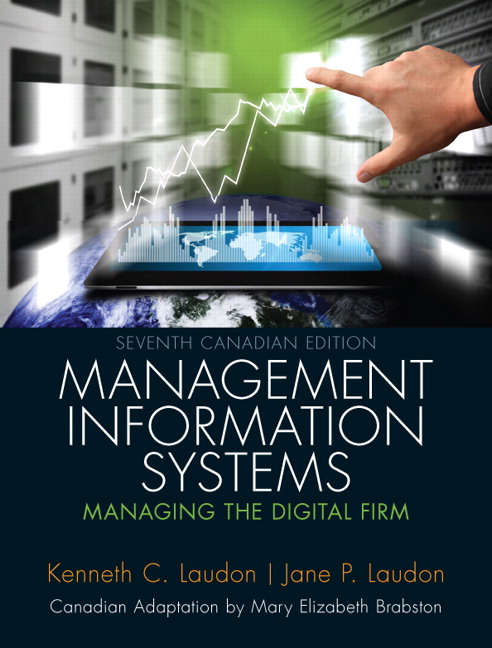
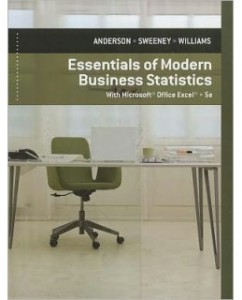
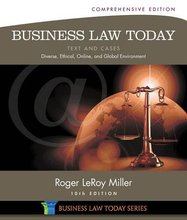
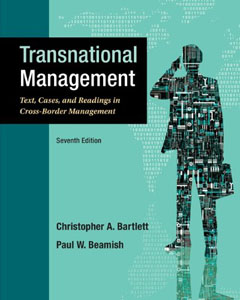
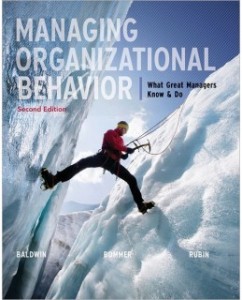

Reviews
There are no reviews yet.